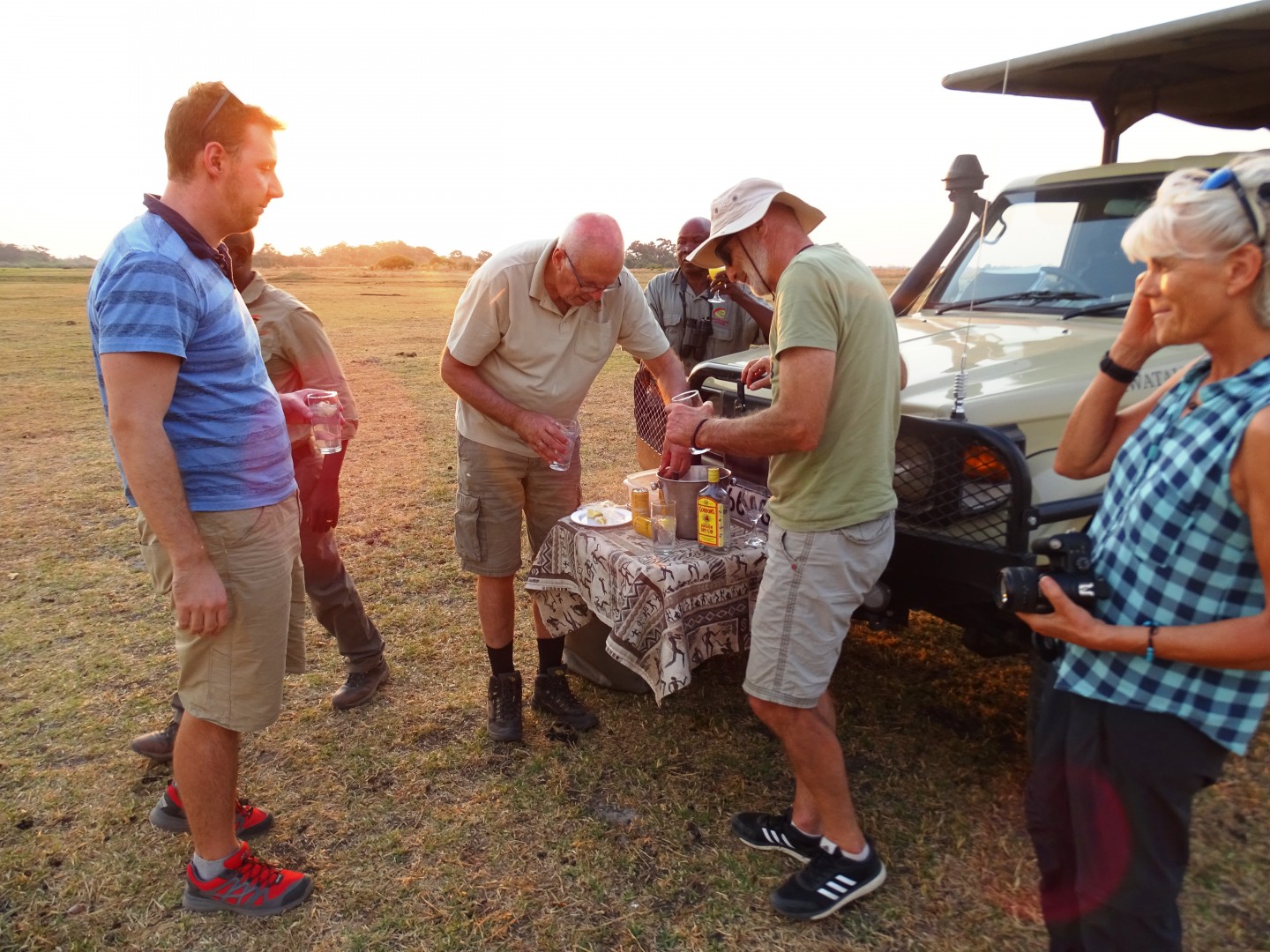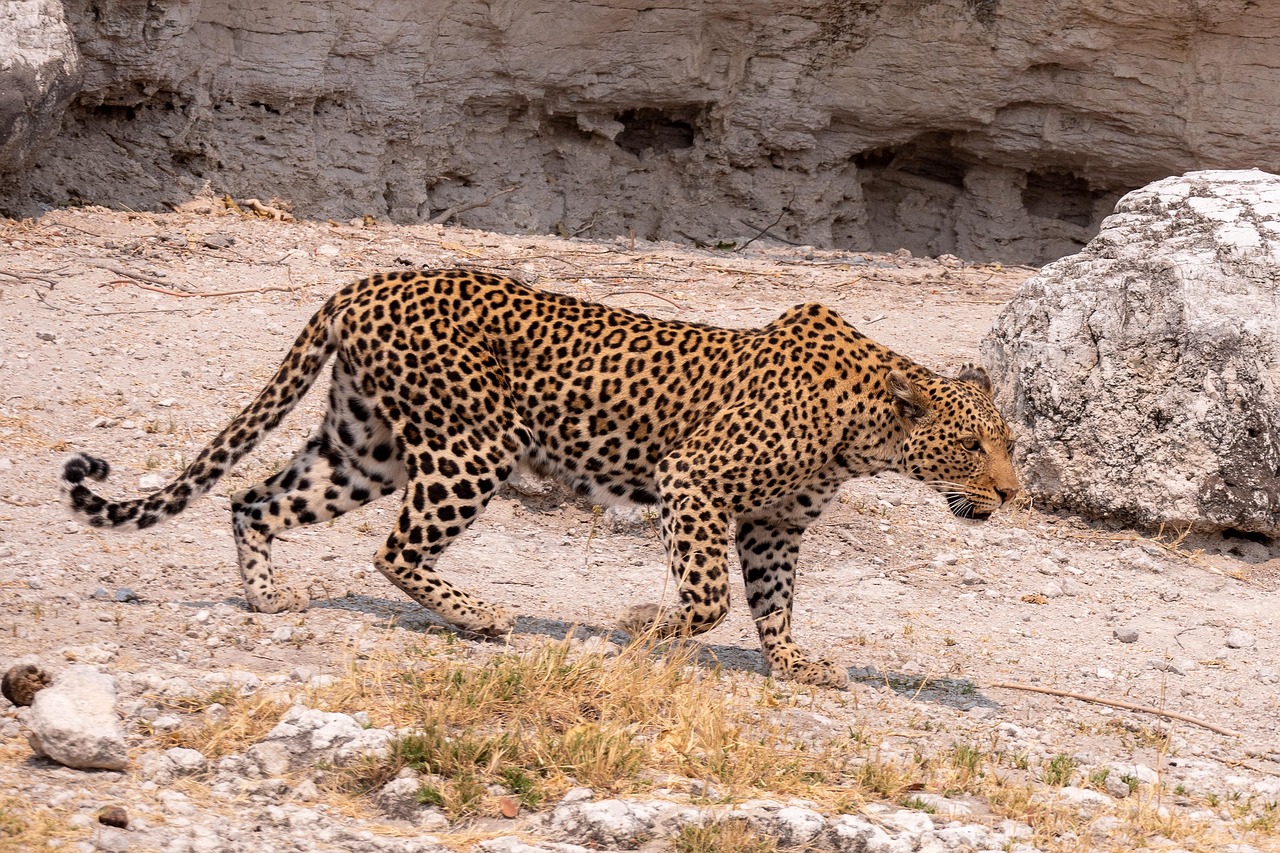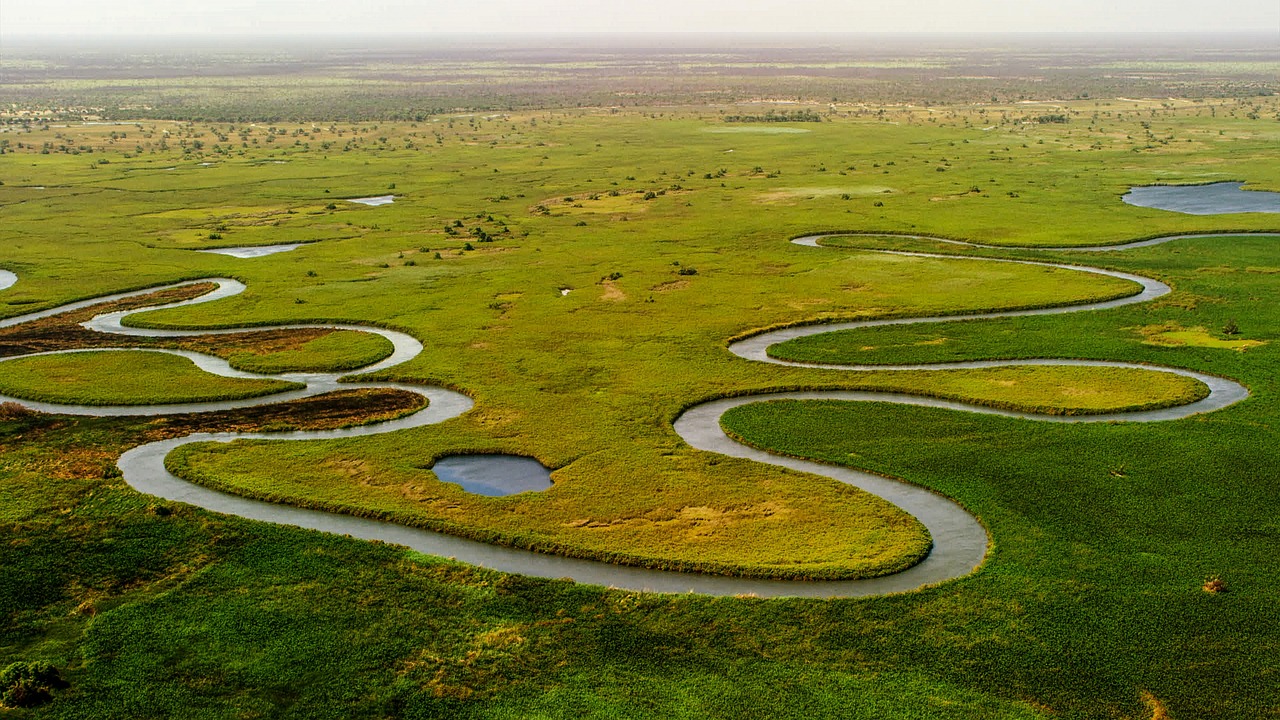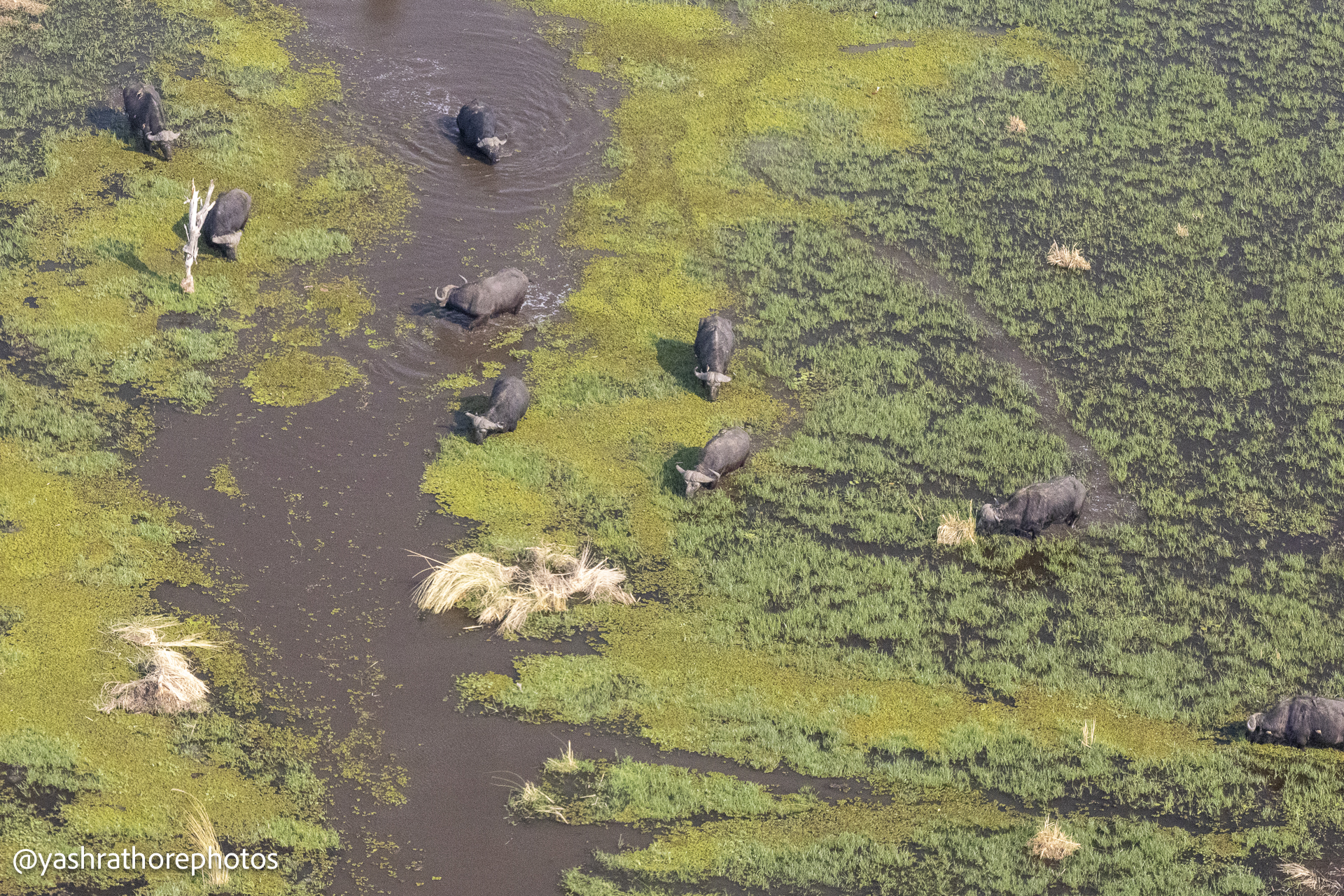Okavango Delta
The Okavango Delta is a vast inland river delta in northern Botswana. It's known for its sprawling grassy plains, which flood seasonally, becoming a lush animal habitat. The Moremi Game Reserve occupies the east and central areas of the region. Here, dugout canoes are used to navigate past hippos, elephants and crocodiles. On dry land, wildlife includes lions, leopards, giraffes and rhinos.
Chobe National Park
Established in 1968, Chobe National Park covers approximately 11,700 sq km, encompassing floodplains, swamps and woodland. The Chobe River forms the park's northern boundary, which includes four distinct geographical areas: The Chobe River Front, The Ngwezumba pans, Savuti and Linyanti.
The most accessible and frequently visited of Botswana's big game country, the Chobe Riverfront, is most famous for the large herds of elephants and Cape Buffalo that converge on the riverbank to drink during the dry winter months.
During this season, on an afternoon game drive, you may see hundreds of elephants at one time. The main Serondella Road sometimes becomes impassable as scores of family herds cross the main road to make their way to the river to drink, bathe and play.
Moremi Game Reserve
Moremi Game Reserve is in northern Botswana, in the Okavango Delta, which becomes a lush animal habitat during seasonal floods. Dugout canoes are used to navigate past birdlife, hippos and crocodiles on waterways like the Xakanaxa Lagoon. On land, wildlife includes lions, leopards and rhinos. Safari camps are common, with several dotted around large Chief's Island and the forested Mopane Tongue Peninsula.
Makgadikgadi National Park
The Makgadikgadi Pans National Park is situated south of the Nxai Pan National Park in Botswana and forms with its huge salt pans an impressive surreal landscape.
The name Makgadikgadi means „vast, lifeless land”. For those who prefer solitude and silence this is paradise, as even during the high season people are scarce here.
Nxai Pan National Park
The Nxai Pans National Park is situated north of the Makgadikgadi Pans National Park. The park is dominated by large salt pans, which attract large herds of animals especially during and after the rainy season.
The fascinating landscapes, a group of seven mighty baobab trees – the famous Baines Baobabs – as well as a waterhole frequently visited by a pride of lions are the main highlights of the Nxai Pans National Park.
The park derives its name from a curved stick ‘Nxa’, which the San used to dig out springhares and which the form of the park resembles. The area of the park belongs to the settlement area of the San (Bushmen).
Central Kalahari Game Reserve
In one of the five largest nature reserves in the world, the Central Kalahari Game Reserve (CKGR), you are almost alone in a pristine, secluded and unique dry savanna that is unique in Africa or the rest of the world.
Location and History of the CKGR
The Kalahari Desert forms part of a huge sand basin, which extends from the Orange River in the north of South Africa all the way through Botswana and into Angola. To the west it deviates into Namibia and to the east all the way into Zimbabwe. It covers an area of 1.2 mio km². The Central Kalahari is only a part of the Kalahari and is situated in the centre of Botswana with a size of 53.000 km². Only in 1998 did this area open its doors to tourism. This had the advantage that flora and fauna could develop undisturbed.
The San were the first inhabitants of southern Africa and – according to the latest research – lived here 60.000 years ago already. The formation of the CKGR intended to give the San the opportunity to preserve their traditional culture. However, the Botswana Government banned the San from the CKGR from 1997 to 2005, presumably because of the presents of diamonds in the area. After 2006 they were allowed back into their ancient territories but were only allowed to use their old water wells and to build new ones in 2011. Today’s way of life of these former hunter gatherers can be traced in the village New Xade, in Ghanzi and through the remarkable projects in Kuru and D’kar.
In the south the Khutse Game Reserve joins the CKGR. It covers an area of 2590 km² and is visited far less than the CKGR. More information hereon is provided in a separate article.
Safari Trips




